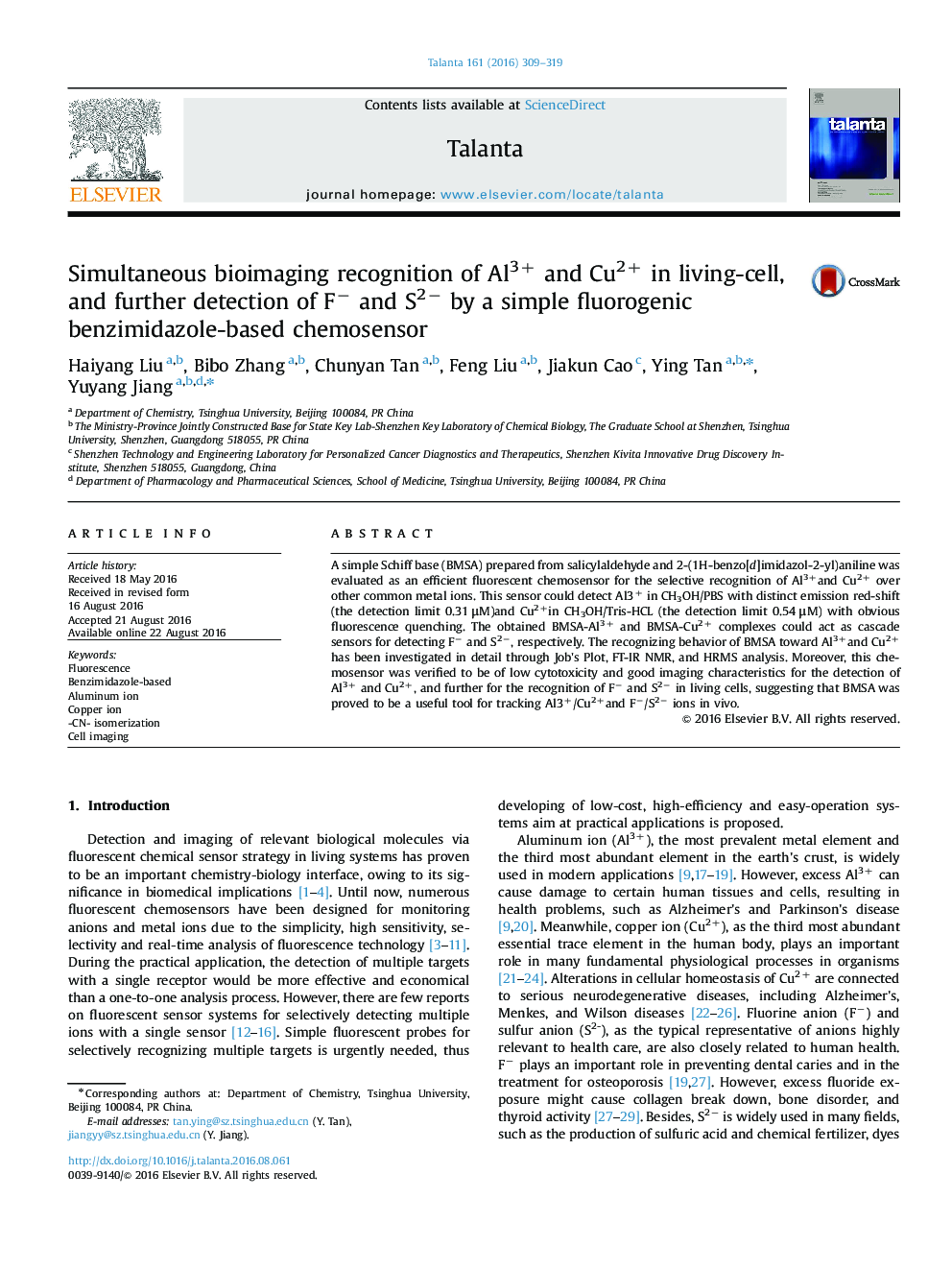| کد مقاله | کد نشریه | سال انتشار | مقاله انگلیسی | نسخه تمام متن |
|---|---|---|---|---|
| 1241719 | 1495775 | 2016 | 11 صفحه PDF | دانلود رایگان |

• A benzimidazole derivative was evaluated as a fluorescent sensor for Al3+ and Cu2+.
• This sensor could detect Al3+ in CH3OH/PBS with distinct emission peak red-shift.
• This sensor could detect Cu2+ in CH3OH/Tris-HCl with obvious fluorescence quenching.
• The obtained complexes can be used as new cascade sensors for detecting F− and S2−.
• The sensor could track Al3+ and Cu2+, and further recognize F− and S2− in live cell.
A simple Schiff base (BMSA) prepared from salicylaldehyde and 2-(1H-benzo[d]imidazol-2-yl)aniline was evaluated as an efficient fluorescent chemosensor for the selective recognition of Al3+and Cu2+ over other common metal ions. This sensor could detect Al3+ in CH3OH/PBS with distinct emission red-shift (the detection limit 0.31 μM)and Cu2+in CH3OH/Tris-HCL (the detection limit 0.54 μM) with obvious fluorescence quenching. The obtained BMSA-Al3+ and BMSA-Cu2+ complexes could act as cascade sensors for detecting F− and S2−, respectively. The recognizing behavior of BMSA toward Al3+and Cu2+ has been investigated in detail through Job's Plot, FT-IR NMR, and HRMS analysis. Moreover, this chemosensor was verified to be of low cytotoxicity and good imaging characteristics for the detection of Al3+ and Cu2+, and further for the recognition of F− and S2− in living cells, suggesting that BMSA was proved to be a useful tool for tracking Al3+/Cu2+and F−/S2− ions in vivo.
This chemosensor could detect Al3+ in CH3OH/PBS with distinct emission peak red-shift and Cu2+ in CH3OH/Tris-HCl buffer with obvious fluorescence quenching over other common metal ions. The obtained BMSA-Al3+ and BMSA-Cu2+ complexes were also determined to act as cascade sensors for deceting F− and S2−, respectively. Moreover, this chemosensor was verified to be of low cytotoxicity and good imaging characteristics for the detection of Al3+ and Cu2+, and further for the recognition of F− and S2− in living cells.Figure optionsDownload as PowerPoint slide
Journal: Talanta - Volume 161, 1 December 2016, Pages 309–319